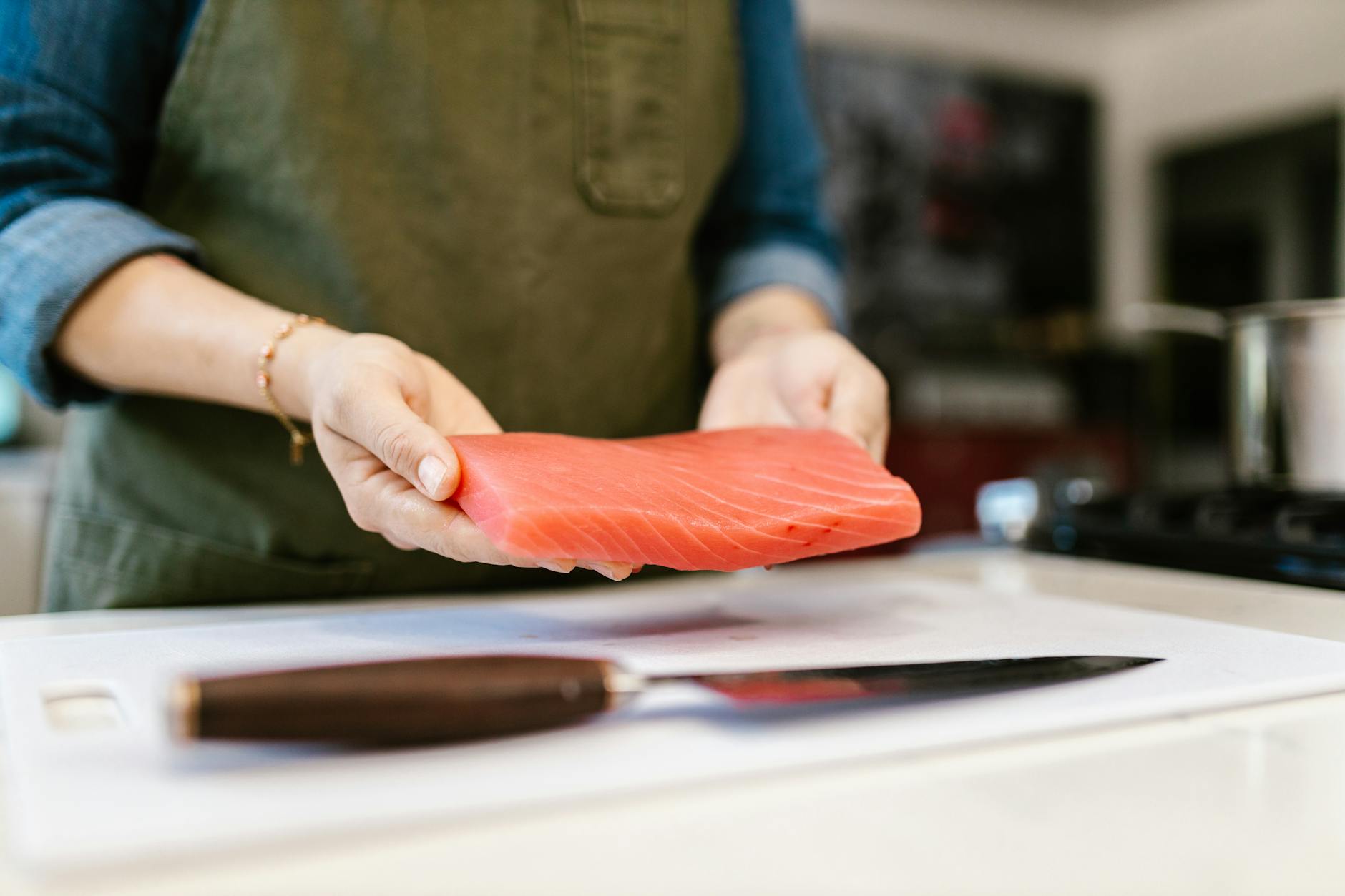
Salmon is often praised for its heart-healthy fats and protein, making it a popular choice for health-conscious eaters. But there’s more to the story. If you love salmon, you might be surprised to learn there are reasons to think twice before making it a staple in your diet. Understanding the risks behind salmon can help you make smarter choices at the seafood counter. The truth is, not all salmon is created equal, and certain types can be bad for you in ways you might not expect. Let’s break down why salmon is really bad for you and what you can do if you still crave it.
1. Contaminants in Farmed Salmon
The primary keyword here is “salmon health risks,” and one of the biggest concerns is contamination. Most salmon sold today is farmed, not wild-caught. Farmed salmon often contains higher levels of pollutants like PCBs (polychlorinated biphenyls) and dioxins. These chemicals accumulate in the fish due to their environment and diet. Over time, consuming contaminated salmon can increase your risk of cancer and other chronic health problems. Studies have shown that farmed salmon can have up to eight times more pollutants than wild salmon.
Another issue is the use of antibiotics and pesticides in salmon farms. These substances are used to control disease and parasites in crowded pens, but they can remain in the fish when you buy it. This creates a risk for antibiotic resistance and unknown long-term health effects. If you’re eating salmon for its health benefits, it’s important to consider these risks that come with farmed fish.
2. Mercury Levels in Salmon
Mercury is a toxic heavy metal found in many types of seafood, and salmon is no exception. While salmon generally has lower mercury levels than larger fish like tuna, it can still pose a risk, especially if eaten frequently. Mercury exposure is particularly dangerous for pregnant women and young children, as it can harm brain development and nervous system function.
Even for adults, regular consumption of salmon with trace mercury can add up over time. The salmon health risks associated with mercury are not always obvious, but they’re real. If you’re eating salmon several times a week, you might be putting yourself at risk for mercury toxicity without realizing it.
3. Unsustainable Farming Practices
Beyond personal health, there’s an environmental side to salmon health risks. Many salmon farms use methods that harm the environment, including the use of open-net pens that allow waste, chemicals, and parasites to escape into the ocean. This pollution can damage local ecosystems and threaten wild fish populations.
Some farms also rely on wild-caught fish to feed their salmon, which puts additional pressure on already stressed fisheries. The environmental impact of salmon farming can contribute to the decline of wild species and disrupt the balance of marine life. If you care about the planet, it’s important to consider how your salmon is produced.
4. Artificial Coloring and Additives
Farmed salmon doesn’t naturally have that bright pink color most people expect. Instead, it’s often a dull gray. To make it look appealing, producers add synthetic astaxanthin or other colorants to the fish feed. While these additives aren’t always harmful in small amounts, they’re not the same as the natural pigments found in wild salmon.
Eating salmon that relies on artificial coloring means you might be ingesting substances your body doesn’t need. Over time, consuming unnecessary additives can contribute to the salmon health risks you’re trying to avoid by choosing fish in the first place.
5. Allergic Reactions and Food Sensitivities
Some people develop allergies or sensitivities to salmon, especially farmed varieties. Symptoms range from mild itching or swelling to severe anaphylactic reactions. If you notice digestive issues, headaches, or skin problems after eating salmon, it could be your body signaling a problem.
Food allergies can develop over time, even if you’ve eaten salmon for years without trouble. The risk of allergic reaction is another reason why salmon can be bad for you, particularly if you have a family history of seafood allergies.
What to Do If You Love Salmon
It’s understandable if you’re not ready to give up salmon completely. The good news is, you can reduce salmon health risks by making smart choices. Opt for wild-caught salmon whenever possible, as it typically contains fewer contaminants and less artificial coloring. Check labels and ask questions at the seafood counter to ensure you’re getting a responsibly sourced product.
Limit your salmon intake to once or twice a week, and vary your seafood choices to minimize exposure to pollutants and mercury. Consider exploring alternatives like trout, sardines, or anchovies, which offer similar health benefits with fewer risks.
Ultimately, being aware of salmon health risks empowers you to enjoy your favorite fish in moderation and with confidence. How do you feel about the risks and benefits of salmon—will you change how you eat it? Share your thoughts in the comments below!
What to Read Next…
- When What Looks Like Salmon in the Seafood Section Isn’t Salmon
- 6 Places to Find Cheap Seafood in Tennessee That Won’t Break Your Budget
- 5 Stores That Will Actually Cook Your Seafood for You
- 8 Seafood Restaurant Chains in the South You Should Avoid
- The Best Seafood at Costco: These 5 Picks Beat Restaurant Quality
The post Here’s Why Salmon Is Really Bad For You and What To Do If You Love It appeared first on Grocery Coupon Guide.







